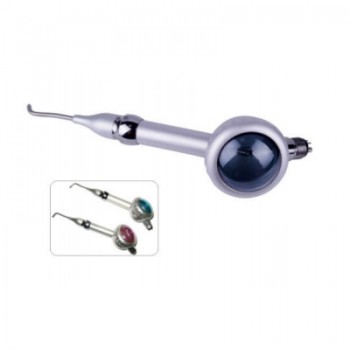Dental air polisher was introduced in the late 1970s as an alternative to a rubber cup filled with pumice. Using a slurry of water, abrasive powder, and pressurized air, the air polisher effectively removes extrinsic stain, plaque biofilm, and prepares occlusal surfaces of teeth for sealant placement. Originally, air polishers were only intended for use on supragingival surfaces since the abrasive powder could potentially harm the softer tissues, such as the cementum, dentin, and gingival epithelium.

Low-abrasive polishing powders: First, let’s examine some benefits of low-abrasive powders. Glycine, an amino acid powder, and erythritol, a natural sweetener powder, are unlike sodium bicarbonate, calcium carbonate, or aluminum trihydroxide powders traditionally used with air polishing devices for supragingival use. In terms of micron size, these supragingival powders are between 40 and 76 microns in size. By comparison, glycine has a micron size of 20-25, and erythritol powder has a micron size of 14.
On the Mohs hardness scale (which measures the hardness of various minerals) these supragingival powders are between 2.5 and 4. Glycine and erythritol powders rank 2 on the Mohs hardness scale. These differences in micron size and hardness translate into a broader use for air polishing, which enables safe use for the removal of biofilm above and below the gum line. In the U.S., glycine powder is currently available, and erythritol powder is undergoing FDA approval.
A controlled stream of air, water and sodium bicarbonate, which passes through a mixing nozzle to allow polishing of the enamel of the tooth. Sodium bicarbonate is a mild polishing agent. The air polisher is suitable for the removel and dissolution of biofilms. It is also used to clean discolorations. Air polisher is a safe and effective form of treatment.
The air polishing for the dental professional include less operator fatigue, less time involved than the traditional polishing technique, and improved access to difficult-to-reach areas. Benefits to the patient include less time in the portable folding chair, less “scraping,” excellent stain removal, reduced dentin hypersensitivity, and improved periodontal status.
Training regarding indications, contraindications, advantages and disadvantages is imperative for use of the air polisher. When used by a properly trained clinician, the clinical benefits as well as patient safety increase. But today, as an educator, I consider dental hygiene curriculum and wonder why not much has changed in regard to training students to use air polishers. The air polishers themselves have evolved, the list of uses has increased, and yet, in many schools, our students are lucky if they learn how to use one.